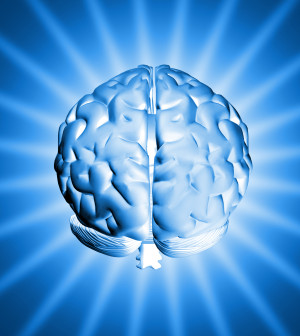- Skip Storing This Everyday Product in the Fridge Door
- Green Tea + B3 Pairing May Boost Brain Health
- Navigating Your Midlife Crisis: Embracing New Possibilities
- City Raccoons Showing Signs of Domestication
- Mapping the Exposome: Science Broadens Focus to Environmental Disease Triggers
- One Week Less on Social Media Linked to Better Mental Health
- Your Brain Changes in Stages as You Age, Study Finds
- Some Suicide Victims Show No Typical Warning Signs, Study Finds
- ByHeart Formula Faces Lawsuits After Babies Sickened With Botulism
- Switch to Vegan Diet Could Cut Your Greenhouse Gas Emissions in Half
Medical Groups Issue Guidelines for Treating First Seizure


One in 10 people worldwide will have a seizure in his or her lifetime, experts say. Now, two medical groups have issued a new guideline on how to treat them.
The decision to treat a patient after a first seizure is complex because doctors must weigh the risks and benefits on an individual basis, according to the American Academy of Neurology and the American Epilepsy Society.
After a review of all available evidence, the two organizations concluded that taking epilepsy drugs immediately after a first seizure may reduce the risk of more seizures.
The guideline, published in the April 21 issue of the journal Neurology, will be presented this week at the annual meeting of the American Academy of Neurology, in Washington, D.C.
“This is a valuable new guideline that could change the approach many doctors take to treating a first seizure and could improve patients’ lives,” guideline author Dr. Allan Krumholz, of the University of Maryland School of Medicine, said in an academy news release.
“About 150,000 adults have an unprovoked first seizure in the United States each year. Even one seizure is traumatic and affects a person’s life in many social ways, such as driving a car, employment options, falling risks and the fear of having another seizure in public. This guideline clarifies when risk factors put individuals at greater risk,” Krumholz said.
An unprovoked seizure is one with no immediately known cause.
Adults who have a first seizure are at greatest risk for another seizure within two years. The risk varies from 21 percent to 45 percent, according to the guideline.
In addition, there was strong evidence that the risk of a second seizure is highest in people with a previous brain problem — such as stroke, brain tumor or head injury — and in those with an EEG test result that shows signs of epilepsy, the guideline said. An EEG is a test used to detect abnormalities related to electrical activity of the brain.
More information
The U.S. National Library of Medicine has more about seizures.
Source: HealthDay
Copyright © 2025 HealthDay. All rights reserved.










